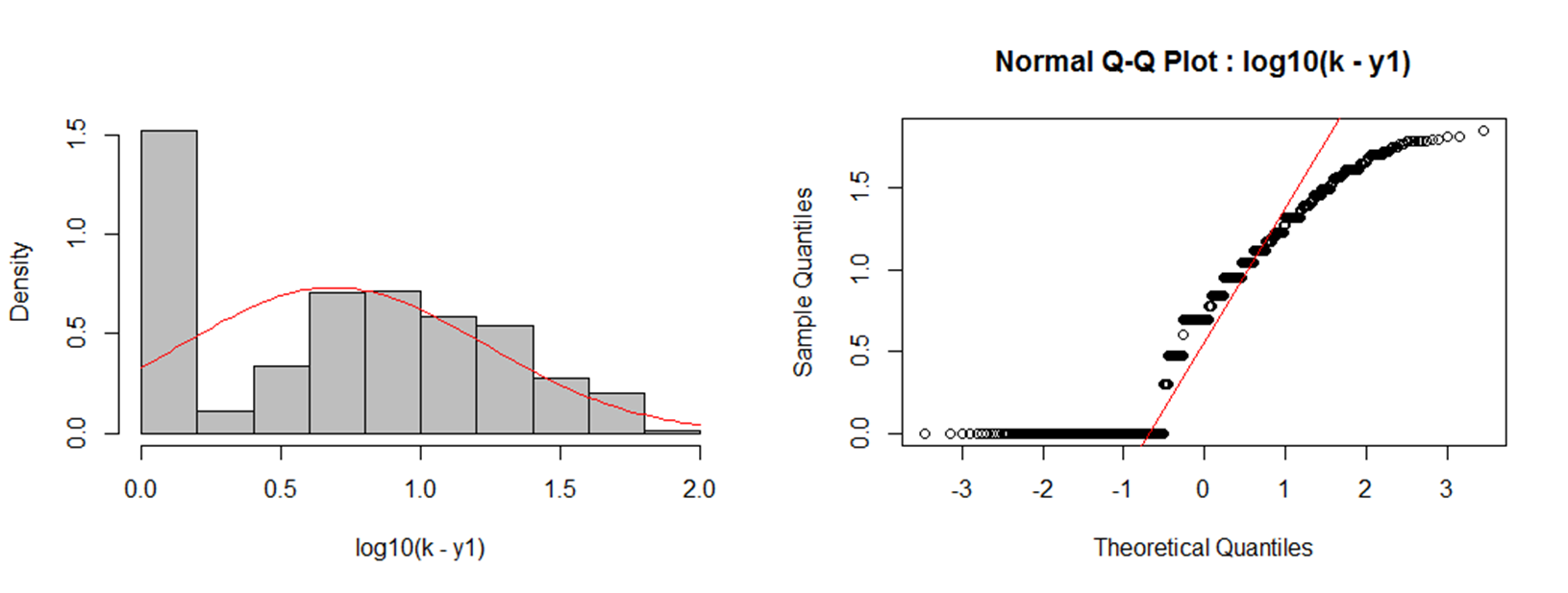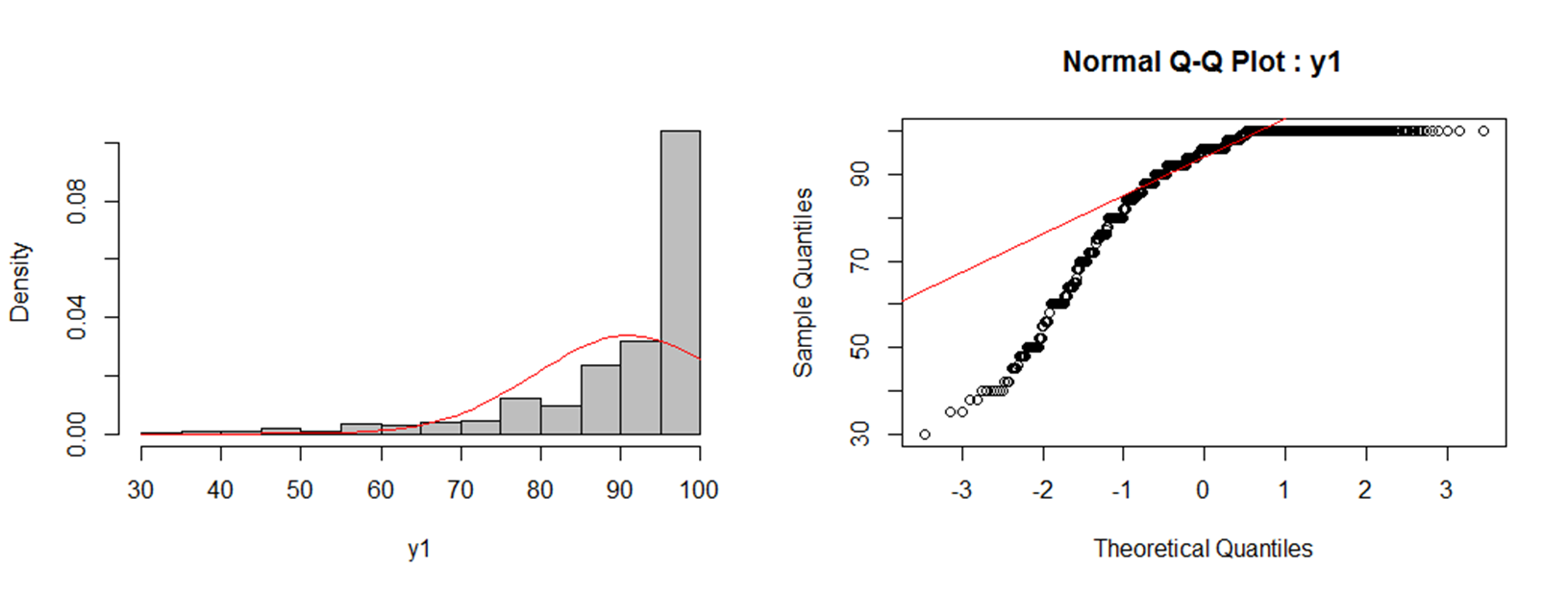As @Glen_b comments, neither distribution is (very) suitable for transformation.
General comments
Here's a Golden Rule in Feynmanesque style, except that there's a Leaden Rule Corollary that is sufficient to sink many misguided hopes in this territory.
Golden Rule With a transformation, the same values map to the same values. Several values of 1? Necessarily their logarithm is the same at 0. Several values of 49? Necessarily their square root is the same at 7.
Leaden Rule Corollary A spike in the original will always be a spike when transformed. A spike here is a large bunch of identical values in the original data. It follows that no transformation will remove a spike. No exceptions! You can move a spike closer to the main mass of the data (or further away; that can happen too). You can't remove it.
A spike often occurs at a limiting value, say a minimum or maximum, at which values pile up.
But there can be other kinds of examples. See Why do a density plot and a rug plot seem to disagree? for an extraordinary example with a famous dataset that is easy to miss if you don't look carefully enough at the data.
So spikes in the middle of a distribution are possible too. Sometimes there is a spike of exact 0s among negative, zero and positive values as a side-effect of data resolution or some algorithm. These spikes look worse than they behave, on the whole.
But what about almost identical values? That depends. A really strong transformation can work wonders, but always check, preferably graphically.
For example, a logit transformation of beta distributions always yields a unimodal result, even with so-called U-shaped distributions.
Specific comments on the data examples
In this case, a percent measure with values at either 0 or 100 or both such as y1 is hard to transform. Reflection is useless, as it just reflects the problem. Logit transformation is useless if either bound is attained. Some people try folded power (such as folded root or cube root) transformations. On those see e.g.
Regression: Scatterplot with low R squared and high p-values
What is the most appropriate way to transform proportions when they are an independent variable?
and their references. (The second has comments on the often treacherous $\log($value $+$ smidgen$)$.)
A percent measure, even a measure with values at 0 and/or 100, can however be response variable in a generalized linear model with logit link. That assumes only that means are defined on the logit scale. The fact that logits of 0 and 1 (100%) are undefined need not bite.
More widely, note that with ANOVA the key assumption focused on is that conditional distributions are normal. Marginal normality is irrelevant as such. And ANOVA will often work quite well if outliers are absent. Clearly, you need to consider other assumptions too, all of them more important than normality.
I would probably work with logarithms of y2, or better with a generalized linear model with logarithmic link. You will need to look carefully to see what's behind the bimodality.
Yet more general comments
The question here, like many others on transformation, focuses on marginal normality as a goal of transformation. That goal can be unattainable (bad news, supposedly) but not nearly so important as people imagine (good news, immediately), even for methods such as regression and ANOVA widely thought to require normality. It is worth underlining that transformation can have many goals, such as the diffuse but crucial goal of helping you to see the structure in the data, or the lack of structure, even though that lack will be unwanted and disappointing.
This answer gives no worked examples (the OP did not post data) but the threads linked above all contain examples.






